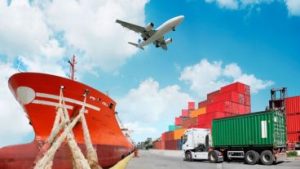Construction is a high hazard industry that comprises a wide range of activities involving construction, alteration, and/or repair.
Construction is one of the most dangerous occupations in the world, incurring more occupational fatalities than any other sector. In 2016, 120 in 1000 construction workers were injured, in Argentina. The accidents occur within the employee’s first year of employment.
The injuries that contributed to 57 percent of the fatalities in the construction industry were falls, caught between objects, electrocutions and struck by objects.The Superintendence of Occupational Risk (SRT) hasnt released complete information or statistics about death and accidents in the construction industry. The latest statistics are from 2014.
Annually, around 69,000 construction workers were suffering from an illness they believe was caused or made worse by their work.
The latest information shows that the provinces of Santa Fe, Cordoba and Buenos Aires are the places with highest accident rates.
Within construction, there are a broad range of jobs, some hazardous than others. According to SRT’s reports, construction, alteration, and/or repair and builders, roofers, steel erectors, plumbers, carpenters and joiners and glaziers are the riskiest jobs.
Falls are the leading cause of death in construction. Falls are one of the most common causes of fatal and non-fatal injuries among construction workers. Construction industry accounted for 46% of falls-related fatalities.
The following hazards cause the most fall-related injuries:
- Unprotected Sides, Wall Openings, and Floor Holes
- Improper Scaffold Construction
- Unguarded Protruding Steel Rebars
- Misuse of Portable Ladders
Falls can be prevented when workers understand proper set-up and safe use of equipment, so they need training on the specific equipment they will use to complete the job.
There are cases of illness (such as skin or respiratory conditions), cases of stress, depression or anxiety cases and cases of musculoskeletal disorders (MSD). Also, the impacts of health and safety failings in terms of working days lost, costs to society and enforcement action taken against employers within the sector.
This is a concern for elder and untrained construction workers. Sometimes, they weren’t provided by construction Personal Protective Equipment (PPE). The most-violated standard is fall protection. Workers are not aware of the hazards, and their employer doesn’t implement an effective safety and health program.
The most common hazards in the construction industry are:
- lifting and pushing – handling heavy or awkward sized objects
- slips, trips, falls – . slipping on a wet surface or falling from a ladder
- using hand tools such as power tools, saws, shovels and crow bars
- noise from machinery such as concrete cutters, drills and saws
- atmospheric contaminants such as dust, synthetic mineral fibres and asbestos.
The chance that these hazards will result in an injury for young workers is higher when they are combined with risk factors such as:
- lack of supervision •lack of training
- working alone •being uninformed about their rights
- trying to impress the boss, supervisor or co-workers
- temporary employment.
When hazards are combined with risk factors (these are called dangerous combinations) the chance of injury, and the possible seriousness of the injury, increases.
In 2015, it was approved the Resolution 1642-1609 which created the Quadripartite Commission of Construction Nationwide, whose purpose was to implement a monitoring program to the 50 construction companies that had the highest accident rates in Buenos Aires and the provinces of Cordoba, Mendoza and Santa Fe (Rosario).
In reason of this program, in 2014 it was reduced by 43.7% the rates of accidents in those 50 companies. These accidents are preventable. Its important provide training for workers and employers on the recognition, avoidance, abatement, and prevention of safety and health hazards in workplaces in the construction industry, providing basic safety and health information and education.
When they are working from heights, such as ladders, scaffolds, and roofs, employers must plan projects to ensure that the job is done safely. Begin by deciding how the job will be done, what tasks will be involved, and what safety equipment may be needed to complete each task.
When they are estimating the cost of a job, employers should include safety equipment, and plan to have all the necessary equipment and tools available at the construction site.
It’s employers’ responsibility to keep workers safe. Safety should be one of the top priorities of any construction company.










Very important information!